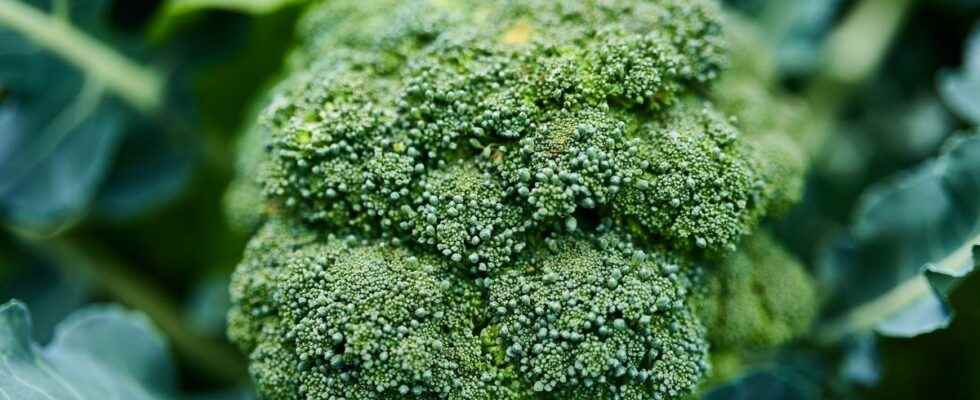Published on
Updated
Reading 2 mins.
If you distinguish between a broccoli and a cauliflower solely by relying on the color of the food, this trick may not be valid one day. Subject to climate change, some broccoli could indeed lose their green hue and look more like cauliflower, underlines a recent study.
Are green broccoli on the way out?
Recent research points to the risks of excessively high temperatures caused by climate change, which could cause a change in the color of these foods. According to the published study in the journal Molecular Horticulture by American researchers at Cornell University, broccoli flowers develop normally when the growing temperature rises to 62°F (about 16°C).
However, its crowns begin to deform as soon as the mercury exceeds 72.°F (about 22°C). And if the vegetable is exposed to a temperature of more than 82°F (about 28°C), its development risks being limited to a cross between a head of broccoli and a curd, that is to say the part white and edible cauliflower.
Broccoli disguised as cauliflower?
To better understand how heat affects the proper development of broccoli, the authors of the work carried out a DNA modification on a specific species of broccoli. Specifically, the scientists deleted a group of genes necessary for the normal production of broccoli heads. The latter understood that it was precisely the deletion of these genes that altered the development of vegetables, to the point of making them look like cauliflowers. But according to the researchers who led this work, modifying the genes involved in the growth of these green vegetables could make it possible to maintain their production (including at high temperatures), thanks to the injection of a product chemical called 5-azacytidine.
GMO broccoli to stay green?
However, further studies will be needed to determine the exact mechanism associated with the abnormal growth of broccoli when exposed to high temperatures. “Once we better understand the mechanism, we should be able to develop new biotechnology to improve crops so that they can grow at much higher temperatures and in larger areas,” the researchers said. study authors in a press release.
Broccoli are not the only element of nature to undergo a change in their appearance under the effect of climate change. A study published in 2022 showed that blue tits in the south of France gradually lost the color of their plumage over the space of fifteen years. The rise in water temperature caused by global warming could also give a green tint to the lakes, caused by the proliferation of algae.
